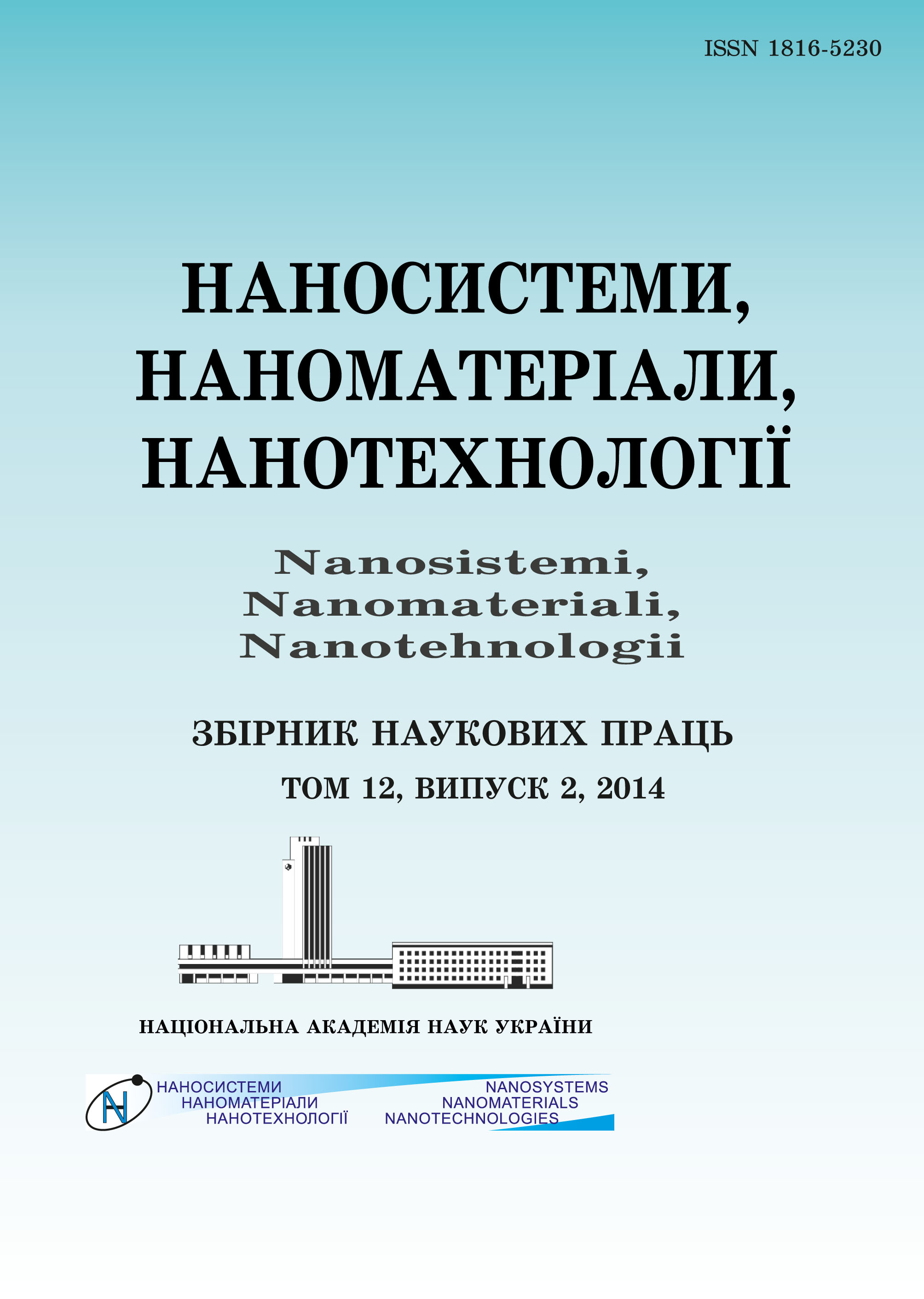|
|
|||||||||

|
Year 2024 Volume 22, Issue 2 |
|
|||||||
|
|||||||||
Issues/2024/vol. 22 /issue 2 |
|
MARIAM ABDUL RAZAK DARAKLI and
MANAR ABDULLAH ABOU HASSAN
Green Synthesis of Silver Nanoparticles Using
Figs (Ficus carica L.) Leaves Extract Syrian
469–479 (2024)
PACS numbers: 68.37.Hk, 81.07.Pr, 82.80.Pv, 87.64.Ee, 87.85.jf, 87.85.Rs
The green nanoscale approach aims to advance development of clean technologies using nanotechnology, to minimize potential environmental and human health risks associated with the manufacture and use of nanotechnology products, and to encourage replacement of existing products with new nanoproducts, which are more environmentally friendly throughout their lifecycle. In addition, to being inexpensive, the easy implementation process and the advantages of synthesis without toxic chemicals are the main reasons of interest. Nanoparticles (NPs) are synthesized in many ways, including the biological method, which is an easy, fast, inexpensive and environmentally safe method and depends on using microorganisms or plant extracts. In this study, silver nanoparticles (Ag NPs) are successfully synthesized using figs (Ficus carica) leaf extract. The resulting nanoparticles are examined using scanning electron microscopy (SEM) and energy dispersive x-ray spectroscopy (EDX). The spectrum (SEM–EDX) analysis shows that the Ag NPs are of cubical shapes and their elemental composition contains mostly silver. The size of the nanoparticles produced is approximately in the range of 16.9–39.5 nm
KEY WORDS: Ficus carica, silver nanoparticles, biosynthesis, plant extracts, nanotechnology, SEM, EDX
DOI: https://doi.org/10.15407/nnn.22.02.469
REFERENCES
- H. Acay, Appl. Ecol. Env. Res., 17, Iss. 6: 13793 (2019); http://dx.doi.org/10.15666/aeer/1706_1379313802
- V. Abdi, Z. Ghasemi, and I. Sourinejad, Iranian Journal of Chemistry and Chemical Engineering, 40, Iss. 5: 1375 (2021); https://doi.org/1021-9986/2021/5/1375-1385
- D. Letchumanan, S. P. Sok, S. Ibrahim, N. H. Nagoor, and N. M. Arshad, Biomolecules, 11, Iss. 4: 564 (2021); https://doi.org/10.3390/biom11040564
- M. T. Alloosh, Arab Journal of Plant Protection, 38, Iss. 4: 267 (2020).
- G. Das, H. S. Shin, and J. K. Patra, International Journal of Nanomedicine, 17, Iss. 1: 4261 (2022); https://doi.org/10.2147/IJN.S357343
- C. Li, M. Yu, S. Li, X. Yang, B. Qiao, S. Shi, Z. Chunjian, and Y. Fu, Plants, 10, Iss. 11: 2532 (2021); https://doi.org/10.3390/plants10112532
- Y. S. Lee and J. D. Cha, Kor. J. Microbiol. Biotechnol., 38, Iss. 4: 405 (2010).
- A. Corciov?, C. Mircea, A. F. Burlec, A. Fifere, I. T. Moleavin, A. Sarghi, C. Tuchilus, B. Ivanescu, and I. Macovei, Life, 12, Iss. 10: 1643 (2022); https://doi.org/10.3390/life12101643
- C. Karthik and K. V. Radha, Dig. J. Nanomater. Biostruct., 7, Iss. 3: 1007 (2012).
- H. D. Kyomuhimbo, I. N. Michira, F. B. Mwaura, S. Derese, U. Feleni, and E. I. Iwuoha, SN Applied Sciences, 681, Iss. 1: 1 (2019); https://doi.org/10.1007/s42452-019-0722-y
- M. F. Baran, A. Ko?, and S. Uzan, International J. on Math., Eng. and Natural Sci., 5, Iss. 2: 44 (2018).
- Alexandra Nicolae-Maranciuc, Dan Chicea, and Liana Maria Chicea, International Journal of Molecular Sciences, 23, Iss. 10: 5778 (2022); https://doi.org/10.3390/ijms23105778
- E. Rodr?guez-Le?n, R. I?iguez-Palomares, R. E. Navarro, R. Herrera-Urbina, J. T?nori, C. I?iguez-Palomares, and A. Maldonado, Nanoscale research Letters, 8, Iss. 1 (2013); https://doi.org/10.1186/1556-276X-8-318
- M. Naveed, B. Bukhari, T. Aziz, S. Zaib, M. A. Mansoor, A. A. Khan, M. Shahzad, A. S. Dablool, M. W. Alruways, A. A. Almalki, A. S. Alamri, and M. Alhomrani, Molecules, 27, Iss. 13: 4226 (2022); https://doi.org/10.3390/molecules27134226
- H. I. Al-Shammari and H. K. Al-Zubaidi, Iraqi J. Agric. Res., 22, Iss. 8: 78 (2017).
- M. Forough and K. Farhadi, Turkish J. Eng. Env. Sci., 34, Iss. 1: 281 (2010); https://doi.org/10.3906/muh-1005-30
- G. M. Srirangam and K. P. Rao, Rasayan J. Chem., 10, Iss. 1: 46 (2017); http://dx.doi.org/10.7324/RJC.2017.1011548
 This article is licensed under the Creative Commons Attribution-NoDerivatives 4.0 International License ©2003—2024 NANOSISTEMI, NANOMATERIALI, NANOTEHNOLOGII G. V. Kurdyumov Institute for Metal Physics of the National Academy of Sciences of Ukraine. E-mail: tatar@imp.kiev.ua Phones and address of the editorial office About the collection User agreement |